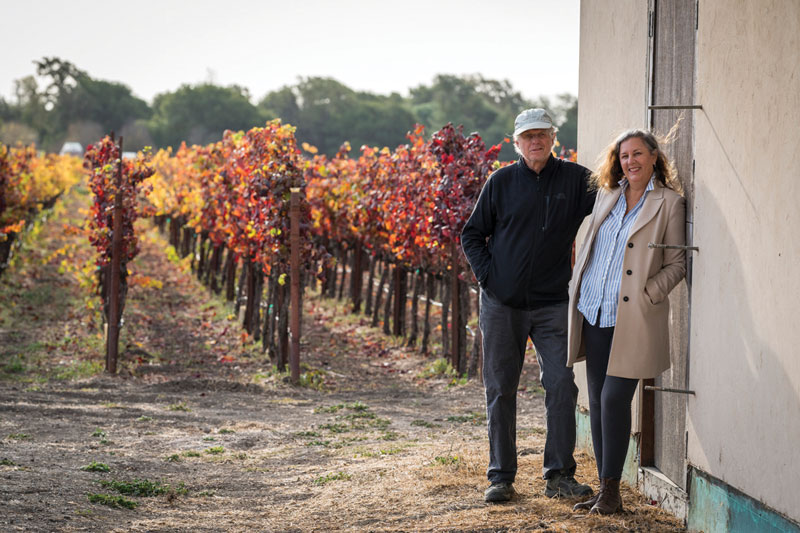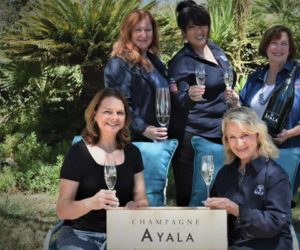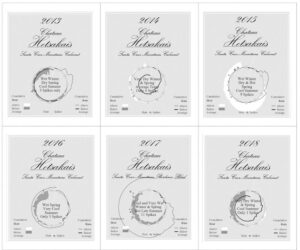So was it worth it? It depends if you ask the question around April 15th. Yes, the tax write-offs are great if you have other income. However, if you are risk averse and are uncomfortable writing a multitude of checks, then a different business investment is probably a better choice. The key words are “business investment.” Going pro is just that, a business investment that should be looked at within the context of your financial means and overall investment portfolio. Yes, you may be a talented home winemaker who makes fabulous wine and has dreams of going pro, but dreams need to be tempered with a keen understanding of the complexities involved in such an alluring business venture.
I often consider myself the unknown poster child for WineMaker magazine. I read the magazine, I have attended eight WineMaker Conferences since 2010, I have entered several WineMaker International Amateur Winemaking Competitions, as well as attending several WineMaker Boot Camps. I am a California professional geologist and my husband is a California licensed architect. We own a small Pinot Noir vineyard (12,000 vines) in the Carneros District of Napa Valley and have been selling our Pinot Noir grapes to Napa Valley wineries since 2005. In 2018, when California wineries were burdened with an oversupply of grapes, we were in the unfortunate position of getting a non-renewal notice for our longstanding grape contract with a prominent winery. Faced with not being able to sell our grapes due to the grape glut, we made the decision to take the plunge and start our own wine brand, Ammons Horn Wines (ammonshornwines.com).
First let me explain that I am a good winemaker but I’ve never aspired to become a professional winemaker.
You’ve heard the saying, “God looks out for fools and babies . . .” it must be true because we are still moving forward on this venture. First let me explain that I am a good winemaker but I’ve never aspired to become a professional winemaker. Rather my expertise is in project management having worked professionally in consulting engineering for many years. For our wine business, we would need to hire professional winemakers for our 1,200-case annual production (75% still wine and 25% sparkling wine) with most of the wine produced at custom-crush facilities. For our still wine program, we are following the Alternating Proprietorship (AP) model. Our AP 02 bond with the California Department of Alcoholic Beverage Control (ABC) allows us to sell direct to consumers but saves the cost of investing millions of dollars in building a winery.
At our Napa vineyard where we live, my architect husband constructed a small home winery in the first level of our chateau-style guesthouse. The home winery was meant to be my retirement “she shed,” but instead we choose to bond this little 200-gallon (760-L) per year winery through a Napa County’s home occupation permit. At the bonded home winery, I am the winemaker for a less expensive wine brand in our portfolio of wines. In summary, our more expensive branded wines are produced at the custom-crush facility under the direction of our professional winemaker and our less expensive wines are produced at the 200-gallon/year (760-L/year) home winery are produced by me. For both bonded wineries, we file all the federal and state associated compliance reporting (some quarterly and some annual) including payment of taxes. Storage of our finished cases of wine is at a local bonded wine warehouse, which also responds to our fulfillment requests to ship customer orders from our wine website.

Development of our brand (identifying our target consumers, selecting the style and number of our Pinot Noir wines, working with a label designer for our labels, working with the website designer and marketing consultant, etc.) has taken far more time and expense than anticipated. Yes, people do judge a book by its cover, and they will judge your wine brand by your wine labels, your wine website, and your advertisements. Spending time on the consumer appeal of your business is hugely important. The venue where consumers taste your wine is also extremely important, but that is the topic for another article.
I know by now you are counting dollar signs and whether this business model makes sense in a post-COVID world. Seriously, given the struggles existing wineries are having getting labels and bottles due to COVID-disrupted supply chains and California fire insurance issues driving changes to local building/fire regulations, a new winery investor may need a stiff drink. However, the hard work developing a wine brand does have its rewards. On March 8, 2021 (the day our wine website became fully functional) we learned that our 2018 Reserve Pinot Noir won the Packaging Sweepstakes at the San Francisco Chronicle Wine Competition (the largest wine competition in North American) (https://winejudging.com/medal-winners/2021-medal-winners/2021-802-sweepstakes-winner/ ) along with double gold and gold medals for our still Pinot Noirs and rosé wines. As I said, God looks out for fools and babies.






